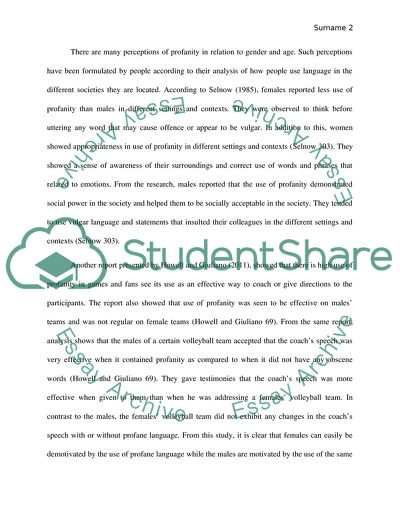Cite this document
(Perceptions of Profanity Research Paper Example | Topics and Well Written Essays - 1750 words, n.d.)
Perceptions of Profanity Research Paper Example | Topics and Well Written Essays - 1750 words. https://studentshare.org/humanitarian/1826997-perceptions-of-profanity
Perceptions of Profanity Research Paper Example | Topics and Well Written Essays - 1750 words. https://studentshare.org/humanitarian/1826997-perceptions-of-profanity
(Perceptions of Profanity Research Paper Example | Topics and Well Written Essays - 1750 Words)
Perceptions of Profanity Research Paper Example | Topics and Well Written Essays - 1750 Words. https://studentshare.org/humanitarian/1826997-perceptions-of-profanity.
Perceptions of Profanity Research Paper Example | Topics and Well Written Essays - 1750 Words. https://studentshare.org/humanitarian/1826997-perceptions-of-profanity.
“Perceptions of Profanity Research Paper Example | Topics and Well Written Essays - 1750 Words”. https://studentshare.org/humanitarian/1826997-perceptions-of-profanity.


